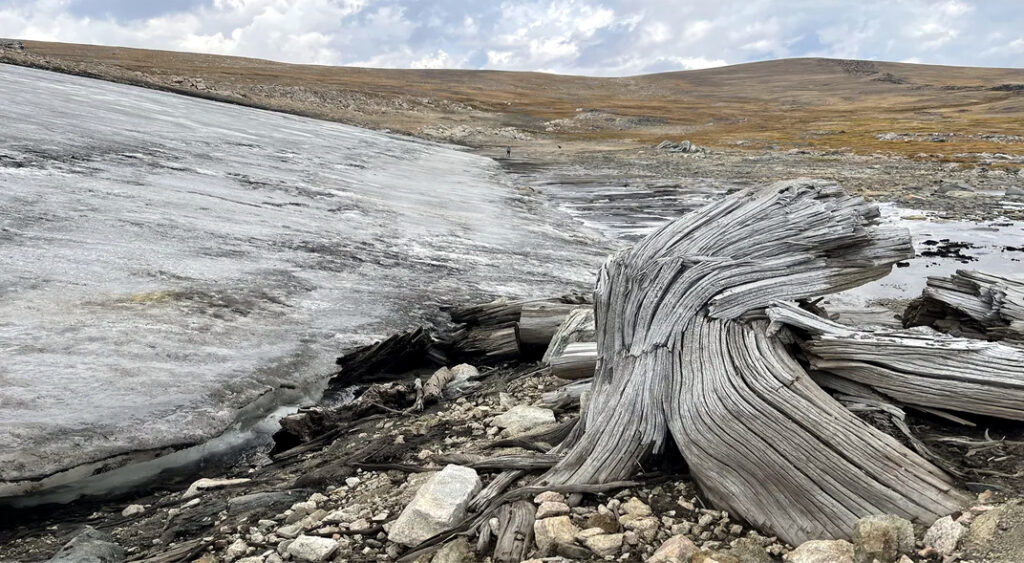Manashimaya

A remarkable discovery in Wyoming’s Rocky Mountains is shedding new light on ancient climate patterns. Scientists have unearthed well-preserved whitebark pine trees encased in ice for nearly 6,000 years. The trees were found on the Beartooth Plateau at 10,140 feet, about 590 feet above the modern tree line, suggesting that the middle Holocene period was significantly warmer than today.
In the findings, which were just published in the Proceedings of the National Academy of Sciences, over 30 trees are in exceptional condition. According to Greg Pederson, the lead researcher and a paleoclimatologist with the U.S. Geological Survey, the trees were quickly covered in ice, which helped preserve them for thousands of years. Researchers who examined tree rings and radiocarbon dating have determined that these ancient trees thrived between 5,950 and 5,440 years ago before dying out due to a significant shift in temperature.
This shift is believed to have been triggered by a series of volcanic eruptions in the Northern Hemisphere, which spewed massive amounts of ash and particles into the atmosphere. The resulting cooling effect made the high-altitude environment uninhabitable for the trees. As temperatures dropped, accumulating snow and ice slowly buried the fallen forest, preserving it as a frozen time capsule.
Experts like Kevin Anchukaitis, a paleoclimatologist at the University of Arizona, emphasize the significance of this discovery in understanding historical climate fluctuations. Meanwhile, environmental archaeologist Craig Lee from Montana State University underscores the importance of such findings in predicting future climate trends.
Despite their resilience, whitebark pines face modern threats, including rising temperatures, prolonged droughts, wildfires, and infestations from pests like the mountain pine beetle. As a threatened species, they play a crucial role in high-altitude ecosystems by stabilizing snow and providing habitat for wildlife. Insights from this discovery could guide conservation efforts to protect these vital trees for future generations.
